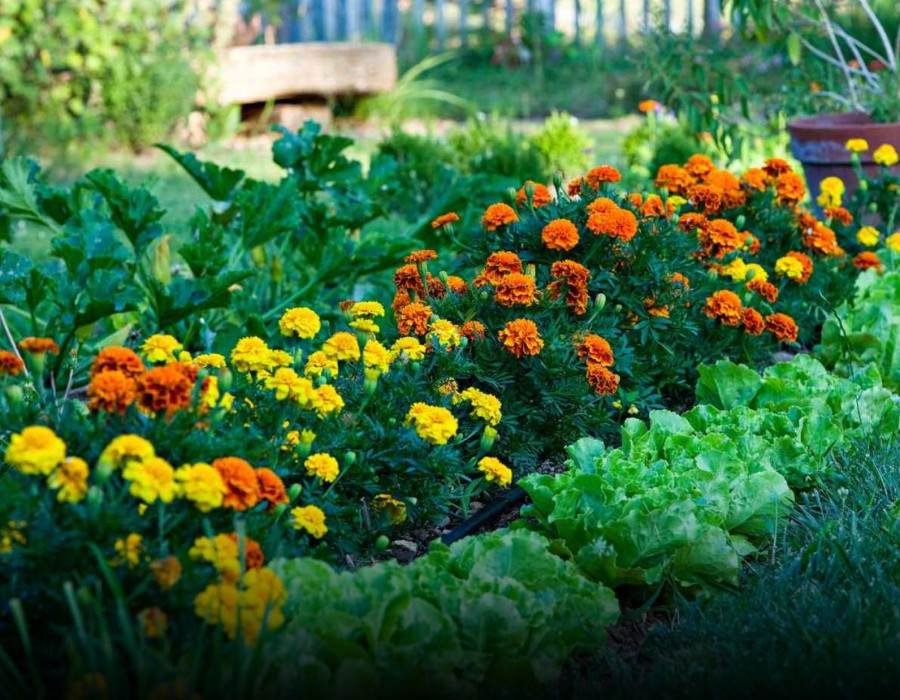Companion planting is a gardening strategy where certain plants are grown together to benefit each other. This technique can enhance growth, deter pests, and improve the overall health of your garden. For beginners, understanding and implementing companion planting can seem overwhelming, but with a clear approach and support from online gardening services, it can be a valuable tool for a successful garden. Here's a detailed guide on how to use companion planting effectively in your garden.
What is Companion Planting?
Definition
Companion planting involves planting different species in close proximity to each other to achieve specific benefits. These benefits can include pest control, enhanced growth, and better soil health.
Benefits of Companion Planting
- Pest Management: Certain plants can repel pests or attract beneficial insects.
- Improved Growth: Some plants can enhance the growth of others by providing shade or nutrients.
- Optimized Space: Plants with complementary growth habits can maximize space usage.
Basic Principles of Companion Planting
1. Plant Diversity
Diverse plantings can reduce the risk of pests and diseases. Growing a variety of plants can create a balanced ecosystem in your garden.
2. Complementary Growth Habits
Choose plants with different growth habits and root structures to prevent competition for nutrients and water.
3. Beneficial Relationships
Understand the specific relationships between plants, such as those that improve soil health or deter pests.
Popular Companion Planting Combinations
1. Tomatoes and Basil
Benefits
- Pest Control: Basil repels tomato hornworms and other pests.
- Enhanced Flavor: Basil can improve the flavor of tomatoes when grown together.
Planting Tips
- Spacing: Plant basil around the base of tomato plants.
- Care: Ensure both plants receive adequate sunlight and water.
2. Carrots and Radishes
Benefits
- Pest Control: Radishes can deter pests that affect carrots, such as carrot flies.
- Efficient Space Use: Radishes mature quickly and can be harvested before carrots need more space.
Planting Tips
- Spacing: Sow radish seeds alongside carrot seeds.
- Care: Keep the soil consistently moist for optimal growth.
3. Beans and Corn
Benefits
- Support Structure: Beans can climb up the tall corn stalks, reducing the need for additional staking.
- Nitrogen Fixation: Beans enrich the soil with nitrogen, benefiting the corn.
Planting Tips
- Spacing: Plant corn in rows and sow beans around the base.
- Care: Ensure corn is tall enough before planting beans.
4. Lettuce and Spinach
Benefits
- Shade: Spinach provides shade for lettuce, which can help prevent bolting (flowering) in warm weather.
- Efficient Use of Space: Both plants have similar soil and water requirements.
Planting Tips
- Spacing: Plant lettuce and spinach close together but ensure good air circulation.
- Care: Regularly water and harvest as needed.
Companion Planting to Avoid
1. Cucumbers and Melons
Reason
- Competition: Both plants can compete for space and nutrients, reducing overall productivity.
2. Beans and Onions
Reason
- Growth Inhibition: Onions can inhibit the growth of beans, leading to poor performance of both plants.
3. Potatoes and Tomatoes
Reason
- Disease Risk: Both plants are susceptible to similar diseases, increasing the risk of spreading infections.
Implementing Companion Planting in a Beginner’s Garden
1. Plan Your Garden Layout
- Research: Study which plants benefit each other and which should be avoided.
- Design: Create a garden layout that incorporates companion planting principles, ensuring enough space for each plant's growth.
2. Start with Easy Combinations
- Beginner-Friendly: Start with simple and well-known combinations like tomatoes and basil or carrots and radishes.
3. Monitor and Adjust
- Observation: Regularly check your garden to observe the interactions between plants.
- Adjustment: Make adjustments as needed based on plant health and growth.
4. Use Companion Planting Resources
- Books and Guides: Utilize gardening books and online resources to deepen your understanding of companion planting.
- Gardening Communities: Join gardening forums or local gardening groups for additional advice and support.
Conclusion
Companion planting is a valuable technique for new gardeners seeking to enhance their garden's productivity and health. By understanding the principles of companion planting and implementing effective plant combinations, you can create a thriving and balanced garden. Start with simple pairings, observe the results, and gradually expand your knowledge and plant selections.





Comments